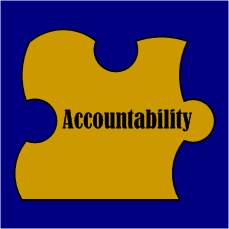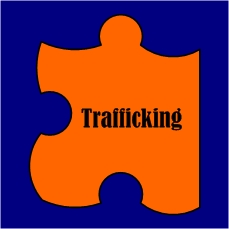How Could You? Hall of Shame-Jayden Alexis Frisbee case-Child Death

This will be an archive of heinous actions by those involved in child welfare, foster care and adoption. We forewarn you that these are deeply disturbing stories that may involve sex abuse, murder, kidnapping and other horrendous actions.
A 2021 case has come to light.
From Jacksonville, Florida, Jayden Alexis Frisbee,16, died on January 11, 2021.
“The state was in charge of Jayden through its privatized foster care system, and it made an inadequate, unstable parent. Jayden was shifted among 12 foster homes in a year and a half, and neighborhood sex traffickers caught up with her along the way.”
“The Sun Sentinel found:
- When Florida’s child welfare system takes in a girl, the odds she will be trafficked for sex increase.
- Florida exploited a loophole so it could keep sending vulnerable girls to group homes, despite a federal law that discourages their use. Teen girls at those homes have been preyed on by traffickers who sometimes “shark” the block, waiting for a girl to walk to the corner store.
- Young people with a history of commercial sexual exploitation run away from group homes at an alarming rate, and those runaways are even more susceptible to sex trafficking. Yet, once they’re gone, no one tries very hard to find them, and nothing in Florida law requires them to.
It’s a dangerous mix: Foster care girls and trafficking victims share many of the same vulnerabilities — a history of abuse or exploitation, instability at home, insufficient parenting and emotional fragility.”
“In September of 2022, 29% of the teenagers in Florida foster care were in group homes, according to DCF reports. The numbers were even higher in ChildNet’s territory of Broward and Palm Beach counties — 36%. In neighboring Miami-Dade County, 19% of teens were in group homes. In Embrace Families CBC territory of Orange, Osceola and Seminole counties, it was 31%.”
“DCF deputy communications director Laura Walthall said Florida’s 249 group homes are not the first preference for placing foster children. “The primary goal is to place children in a family-like setting where all of their needs can be met,” Walthall said in an email.
But as of Oct. 21, there were only 18 family foster homes in the entire state that are approved to care for a trafficking victim.
Walthall and McManus emphasized that three-fourths of Florida’s child trafficking cases are children who were not in foster care.
“Traffickers target the vulnerabilities of both community children and children in the dependency system,” Walthall said in an email. “In recent years, physical proximity to traffickers has proved less important in recruiting than access to social media.”
The latest annual report on trafficked Florida foster children, by the state Office of Program Policy Analysis and Government Accountability, found that 21% of the 377 verified child trafficking victims in 2021 were in DCF foster care.”
“Study after study points to a connection between foster care and sex trafficking.
Professor Reid at USF was blunt in titling a 2018 report “System Failure! Is the Department of Children and Families Facilitating Sex Trafficking of Foster Girls?”
Reid is director of USF’s Trafficking in Persons — Risk to Resilience Research Lab. In a relatively small study she conducted, she found that three-fourths of the trafficked foster girls she examined were not exploited until they were placed in Florida’s foster system.
“One girl explicitly stated, ‘Going to group homes has “turned me out.” … I didn’t do this until I got there,’ ” Reid wrote in her report.
A growing body of research backs up her findings. Members of Congress were told in a 2019 report that “emerging” evidence shows removing kids from their family homes makes them more likely to be trafficked.
And a Florida study found that trafficked foster children were twice as likely to have been removed from their families, five times as likely to have been put in a group home and 10 times as likely to have run away from foster care.
Advocates say that the challenges of living in a group foster setting — lack of attention and structure, few personal belongings and instability — can lead teenagers to willingly go with traffickers who may offer love or gifts such as food and clothes.
“Kids in foster care … they live with strangers,” Latham said. “These people don’t love them. … And this is what they always say about traffickers. Traffickers do love them. And traffickers will put up with anything that kid throws at them.”
The budget for a four-bed Fort Lauderdale group home run by ACTS allows for $1,200 per year for clothes for all the children, $2,800 for entertainment, $2,800 for earned allowances and $9,900 — or about $7 a day per child — for food. Just 3% of the home’s budget is set aside for direct spending on the children.
A teenage girl who went missing from a Broward County group home several years ago was found to be communicating with a 60-year-old man who ran an escort website. She asked him to pay her phone bill in return for sex.
“Hey neil i have a question,” the girl wrote one September day in 2018, according to police records. “My phone goes off tomorrow could you please pay it for me & and i take the money from the session please.”
Jayden’s first foster home was in a crime-ridden neighborhood in Jacksonville, her mother said, echoing a key issue raised repeatedly to the Sun Sentinel.
Weekes told the Sun Sentinel that the privatized system leads to cost cutting at the expense of children. Homes are often operated where real estate is cheapest, and that means high-crime areas where encountering traffickers is more likely.”
“There’s a common thread to many of these girls’ stories: They had run away from foster care, and no one came to find them.
Foster kids in group homes are even more likely to run away, according to the Sun Sentinel’s analysis of DCF data.
Of the 355 foster kids analyzed, 82% had run away during their time in the state’s care. Those in group homes were even more likely to run, the data showed.
When Jayden ran away, she was trafficked and beaten, police records in Duval County say.
In September 2020, after 44 days at a group home, she fled and ended up being sold for sex by adult men out of a motel room, according to Jacksonville deputies.
A 34-year-old man who had sex with Jayden told deputies that three adults in the room beat her up after accusing her of stealing their drugs. One of them kicked and stomped on her head and she was hospitalized with two black eyes and swollen lips.
After that encounter, Jayden was placed back in the “safe house.” After 21 days, she ran away.
And runaways are easily exploited, experts say.
The experience of a 16-year-old Broward girl shows how it can play out. She fled her group home in Hollywood in December 2020 and met an adult man. He took her to the Miramar home of a man named Frantz Mersier, who offered her his couch, a federal criminal complaint says.
Mersier asked for sex, and she later told authorities she felt she had no choice.
He began charging other men to have sex with her, each time pocketing the $100 they paid, according to federal prosecutors.
Finally, left alone in a hotel room, she called for help.
Mersier pleaded guilty in June to child sex trafficking and is now in prison.
When girls like her run away, Florida law does not require group home operators to look very hard for them. The law says “reasonable efforts” must be made.
DCF policy sets out more detail: a list of people to notify and information and material to gather. Actual attempts to locate the child — going to locations where the she is known to hang out, for example — is set at once a week at first, then drops to once a month.
McManus said most runaways in Florida and the U.S. are recovered, and she pointed to DCF policy requiring law enforcement to be called immediately if a child who is a known trafficking victim runs away.
Professor Reid said foster providers should have safety plans for kids who are at higher risk of running away, including providing them emergency phone numbers and addresses of shelters.
“It’s almost like they’re afraid to talk to them about running away because it will make them run away,” Reid said.
But running away is rampant.
The two Fort Lauderdale ACTS group homes near Sunrise Boulevard, for example, together accounted for one out of every three missing persons reports in the entire city of Fort Lauderdale from 2017 to 2021.
The cases get little attention from law enforcement or the media, especially when the children are Black or Hispanic. History has shown the relative lack of attention girls of color get when they go missing. The majority of children in Florida’s foster care system are white, but Black children are still overrepresented relative to their population, the Sun Sentinel’s analysis of data found.
“People have decided what a good victim looks like and what a bad victim looks like,” said Jumorrow Johnson, anti-trafficking coordinator for the Broward State Attorney’s Office.
Johnson said girls of color can be seen as tough, street smart and not in need of a search party.
“It’s in the fabric, it’s in the DNA of this country,” Johnson said. “It’s in the DNA of law enforcement.’’
U.S. Rep. Debbie Wasserman Schultz, D-Weston, said there’s long been a double standard.
“It’s just a travesty that when a white girl goes missing, it seems disproportionately important to the media, to law enforcement, than it does when girls of color” disappear, she said. “When a girl, or any child, goes missing, there should be urgency.””
“The National Foster Youth Institute estimates that 60% of child trafficking victims are current or former foster kids.
“The numbers are so high that we have to do something about the next pipeline of our victims,” Ampah said. “Those are children waiting to become the victims.”
Ampah, who was trafficked from age 11 to 18, said an important first step is educating the public about what to look for. Even as she was being sold for sex in Miami, Ampah would often sleep in her own bed at night as the adults in her life ignored indications she was being trafficked by older men.
“We think that human trafficking is all about these chains, and people are just being handcuffed,” Ampah said. “But it’s really the manipulation of the mind. And if your mind is enslaved, you’re enslaved.””
Innocence Sold: Florida’s foster system provides dangerous sex traffickers with easy access to vulnerable children
[South Florida Sun-Sentinel 11/27/22 by Brittany Wallman, Spencer Norris and David Fleshler]
REFORM Puzzle Pieces



Recent Comments